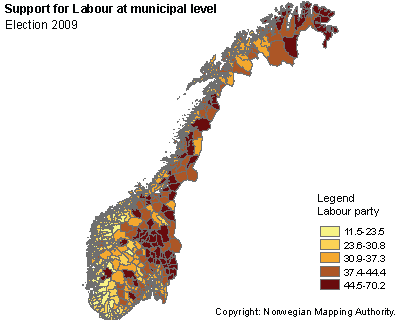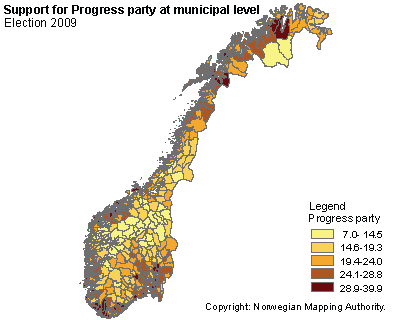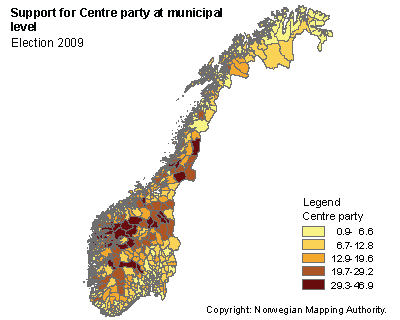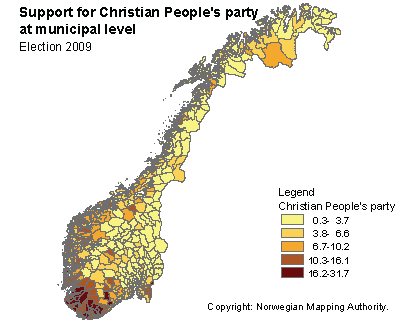Content
Published:
This is an archived release.
Geography still relevant
In the election of 2009, the conflict between centre and periphery was of little relevance in the electoral campaign. Nevertheless, support for most parties follows a distinct geographical pattern that can be traced back to the traditional political cleavage between centre and periphery.
Most switching takes place between parties that are ideologically close to each other. These are some of the findings published from the Electoral Study today. The study was conducted by Statistics Norway and the Institute for Social Research.
Labour strongest in interior parts
Labour has its strongest support in interior parts of the country - from the south eastern part and all the way up north. Except for the most northern county - Finnmark - Labour’s share of the votes is significantly lower along the fiords and coastal regions. However, its traditional weak position in the western part of the country is not so pronounced any more. This is due to weaker support in the other regions.
Conservatives concentrated in capital area
The support for the Conservative party is strongest in the capital and its surrounding municipalities. The party also has stronger support in bigger cities around the country, but also to a certain degree in coastal areas. The geographical profile is quite the opposite of the Labour party.
Progress party strongest along the coast
The geographical profile for the Progress party is quite similar to the Conservatives. The Progress party has a more even dispersion of the votes - its support is not restricted to cities. Except for the eastern and southern parts, the support for the party declines as we move away from the coastal line.
Christian People’s party strongest in the southwest
The Christian People’s party has its strongest geographical base in the south-western part of Norway. Traditionally, the party had strongest support on the “dark coast line” in the western part, but the party has declined in this area during the last two decades. In interior parts, the party has only limited support.
Centre party strongest in the southwest
The Centre party gets its highest share of votes in the mountain regions and Trøndelag (the middle part). This means that the Centre party nowadays is most popular in peripheral municipalities. Earlier, the party had a much stronger position in central regions. This means that the party has lost voters in these areas since the 1970s. The party mobilised many voters during the EU struggle, but these voters were not for keeps.
Marginal geographical differences for Social Left and Liberals
No geographical differences were identified for Social Left and Liberals. The former has never appealed to certain regions of the country, while the latter used to have a strong position in the western part. However, its position in the area has disintegrated since the party split in 1973.
In conclusion, the conflict between centre and periphery still shines through in Norwegian voting behaviour. In the poles of the dimension, we find the Conservative party and the Centre party. The former has its strongest position in the central parts of the country, while the latter has its strongest position in the peripheral parts of the country.
|
For further information: “Finnes det fortsatt regionale forskjeller i norsk politikk?” i Bernt Aardal (ed): Det politiske landskap. En studie av stortingsvalget i 2009, Oslo: Cappelen Damm Akademisk 2011 |
Contact
-
Øyvin Kleven
E-mail: oyvin.kleven@ssb.no
tel.: (+47) 45 88 89 37
-
Statistics Norway's Information Centre
E-mail: informasjon@ssb.no
tel.: (+47) 21 09 46 42




